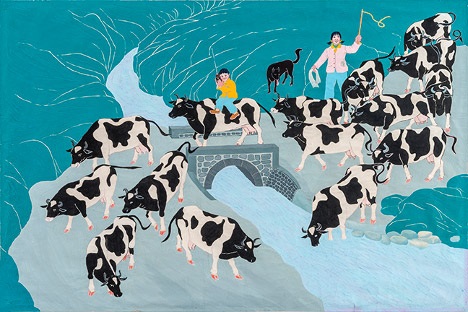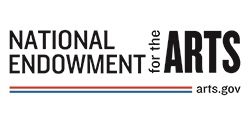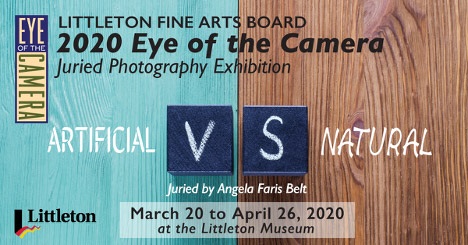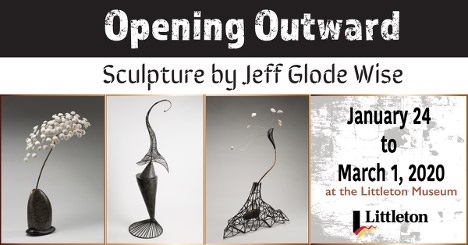Exhibit dates: November 20, 2020 – January 2, 2021
The City of Littleton Fine Arts Board proudly presents the 55th Annual Own an Original art competition at the Littleton Museum. Open to Colorado artists, the competition is for any art medium except photography. This year’s theme is “Liberating Humor” and the juror is Sarah Magnatta, Ph.D., www.magnattaart.com
We are living in a time where people are suffering in a variety of ways. For this year’s Own An Original fine art competition, we are looking at the human condition with a lighthearted mood using the theme of “Liberating Humor.”
To liberate is to provide freedom from the limitations of thought or behavior. Humor can be comical or funny, but it can also describe a state of mind. Together, “liberating humor” can provide a freeing experience, like how a good belly laugh can lighten one’s mood.
A digital version of the exhibit is available by clicking the button below.
Digital Exhibit
2020 Winners!
- Best of Show ($1000.00 and joint Best of Show exhibition in 2021) – Olga & Aleksey Ivanov, “My Las Vegas Money”
- 1st Place ($500.00) – Anne Feller, “Embrace”
- 2nd Place ($250.00) – Matthew Bollinger, “Chromaticism VI”
- 3rd Place ($100.00) – Will Barker, “Upheaval”
- Honorable Mention #1 – Jesse Guess, “Talk to the Moon”
- Honorable Mention #2 – Heidi Rounds, “The Sprinkler”
- Honorable Mention #3 – Shara Oliman, “Carrot-ish”
Exhibit dates: August 14 – October 17, 2020

Shengtao Zhao, Harvesting Sugar Cane in the North, 1985-1991, tempera on paper.
As brilliant as the petals of a lotus and as bold as a spring storm, the folk paintings and artifacts of rural China reveal a national spirit that is as charming as it is vital. The artifacts in Vibrant Bounty reveal a humanity that aids us in understanding a people half a world away. By depicting scenes of labor within lavish pastoral settings, the paintings celebrate the farmers’ unity amidst the immensity of nature.
Vibrant Bounty: Chinese Folk Art from the Shaanxi Region invites visitors on a journey through Shaanxi Province, one of the cradles of Chinese civilization. The capital city, Xi’an, was once the eastern terminus of the Silk Road, and is famous for its ancient ruins, most notably the Mausoleum of Qin Shi Huang and his Terracotta Army. In an area outside of the city’s center lies Huxian (or Hu) County, where, since the 1950s, local artists have been producing objects similar to the twenty-five paintings and fourteen objects found in Vibrant Bounty. This tradition has achieved great renown in China, culminating in the state Ministry of Culture awarding Huxian the honorary title of a “Village of Chinese Modern Folk Painting” in 1988.
These peasant, or farmer, paintings are closely related to the traditional Chinese arts of embroidery, batik (a fabric dyeing method), paper-cut, and wall painting. The artists use shui fen (paint powder and water—similar to gouache or tempera) on thick paper to create the paintings. While Huxian peasant paintings depict ordinary aspects of people’s lives, the vibrant colors emanate from an animated atmosphere, and are only enriched by frequent hyperbole and moral connotations. Festivals, parades, the harvest, music, village traditions, farm animals, winter, kitchen work, and children are all celebrated in these paintings.
The artifacts included in this collection expose us further to Chinese rural life and they show, in detail, traditional Shaanxi customs. They range from children’s clothing and toys to New Year’s prints and decorative household items, often embroidered with lucky figures and animals. Not only are they carefully handmade and beautiful, they also hold symbolic wishes for good luck, good marriage, and good health.
Both the art and the objects featured in this exhibition introduce us to a region of China, which like the American Midwest, is dominated by agriculture and populated with working people. Through these peasant paintings and the artifacts which accompany them, we gain a greater understanding of the customs and culture of people who, despite great distances, share with us essential similarities.
This exhibit is curated by America Meredith, Cherokee Nation artist and arts writer and is a program of ExhibitsUSA and the National Endowment for the Arts.



per·spec·tives: Best of Show exhibition featuring artwork by Gabrielle Graves and Courtney Cotton
Exhibit dates: May 22 – August 2, 2020
The Littleton Museum presents the artwork of Gabrielle Graves and Courtney Cotton, 2019 winners of the Eye of the Camera and Own an Original exhibits, respectively.
While both of the artists’ current body of work focuses on the idea of "perspectives," each artist approaches it with her own unique emphasis and skillset. Cotton’s conceptual painting is meant to bring awareness to mental wellness and emotional intelligence by using visual metaphors and color to embody concepts such as transformation, and possibility. Graves explores the complex narrative of identity and its intersection with consumption and mental health. Her process employs photography, painting, video, and installation to create intimate experiences revolving around changing landscapes and internal dialogue.
Gabrielle Graves received her B.A. in Psychology with a minor in Art & Design from the University of Michigan in April 2017. Shortly after graduating, Gabrielle moved to Snowmass Village, CO to work in the Photography & New Media and Painting departments at the internationally known Anderson Ranch Arts Center. She has also worked as a studio assistant for Isa Catto Studio. Her work has been featured in group exhibitions such as the Patton-Mallott Gallery at Anderson Ranch and the Littleton Museum, and she has collaborated with other artists to create installations such as DECONSCIOUSNESS: Three Levels of Consciousness, which was shown at the Stamps School of Art & Design in 2017. Gabrielle’s practice employs photography, painting, installation, and writing to divulge honest articulations of the psychological space. She is inspired by relationships and forms of identity.
Courtney Cotton is a Denver-based visual artist who is unafraid to express herself by giving visual expression to feeling, which can be seen in many of her paintings and collages. Other inspiration stems from music, mindfulness, and objects that give her a visceral reaction. Whatever the impulse, the result is the fruition of a process, usually grounded in personal discipline that may be spontaneous and rapid or labored and introspective. What transpires, ideally captures the inspiration and transforms it into an exuberant explosion or a contemplative and solemn stillness.
Her work sometimes poses more questions than answers, but it offers room for interpretation and new perspectives. It connects to something universal and hence touches a lot of people. Cotton says, "I have more than one visual voice and some find it hard to define or categorize my style." Sometimes her work is thematic, but just as often she has the impulse to create something without representing anything. Some of her favorite pieces just came about from the act of playing with paint and paper. She explains, "I consciously react with the medium, the activity of creating is paramount, and therefore the results happen automatically with the unconscious influence of experiences and emotions."
Cotton studied art and architecture at the University of South Carolina, Rhode Island School of Design, and Queens College.

Eye of the Camera: Artificial vs. Natural
Exhibit Dates: March 20 – April 26, 2020
Artificial is something made by humans, or an imitation or substitute for something natural. Natural is what is produced or arising from nature, or the world without human impact. The tension between artificial and natural is experienced by humans and animals on a daily basis. This year’s juror for the exhibition is Angela Faris Belt, a visual artist who works with photographic processes ranging from historical to digital. She is particularly suited to the theme as she creates artwork that centers on humankind’s relationship with the natural world and combines specific media to underscore the concepts behind each body of work. Her images are exhibited nationally and abroad and held in many corporate and private collections. She is Program Chair for the Studio Art and Art History programs at Arapahoe Community College, where she teaches darkroom and digital photography. Angela is author of The Elements of Photography: Understanding and Creating Sophisticated Images, a textbook that centers on making meaningful images by integrating photography’s technical aspects with concepts and aesthetics. Angela is represented by Michael Warren Contemporary in Denver, Colorado. More information and images can be viewed at www.angelafarisbelt.com.
This year's exhibit features the artwork of 43 artists. Awards were given for Best of Show, First Place, and Second Place, with $2,400.00 in total prizes. The winner of Best of Show was invited to participate in a two-person Best of Show exhibit at the Museum in 2021.
2020 Award Winners
Best of Show - Ashley Allen, Snow
First Place - Richard Eisen,Daylily Daffodil 04232018
Second Place - Kathryn Charles, Clearcut Sunrise
Honorable Mention - Steve Sorensen, The Jungle Always Wins, Hong Kong
Honorable Mention - Christine June, Chemical Leakage Stain
Honorable Mention - Thomas Carr, Places In-between #2
Opening Outward: Sculpture by Jeff Glode Wise
Exhibit Dates: January 24 – March 1, 2020
Wise’s sculpture is rooted in balance, with great respect for materials and their inherent textures. Bases of concrete and wood suggest earthbound elements, while forged bronze and gold plating suggest the fluid motion of the heavens. He interprets visual gestures found in nature and astronomy, from swirling galaxies and the rhythmic movement of birds and fish to the human figure and spirit. In short, he attempts to “elude the grasp of gravity, allowing rocks to float and metal to flow like water.”
In Opening Outward, Wise has gathered some of his works that best reflect his journey of imagination. With a range of interests, the selected works illustrate a pathway of exploration, experimentation, and discovery.
